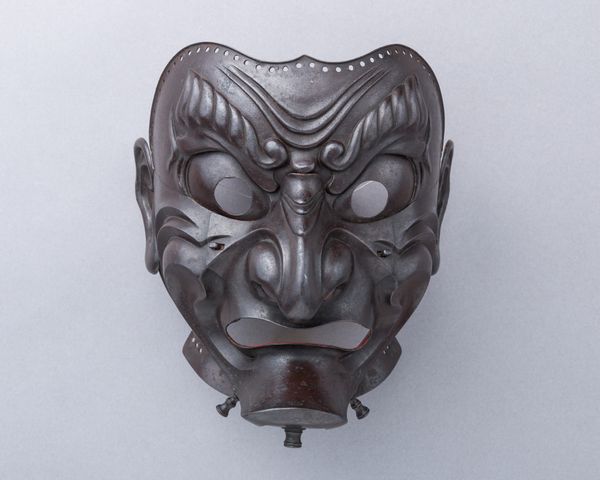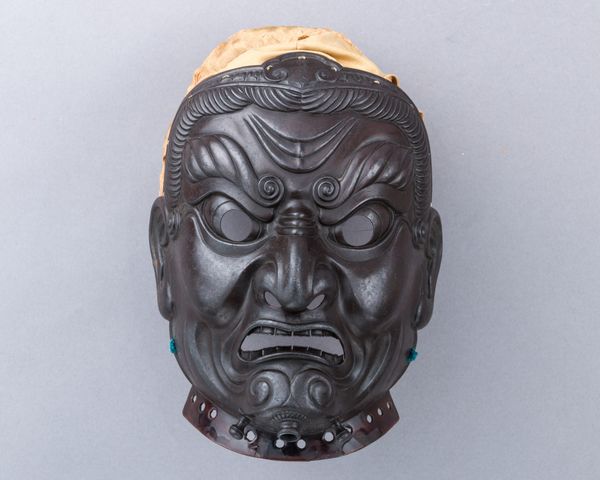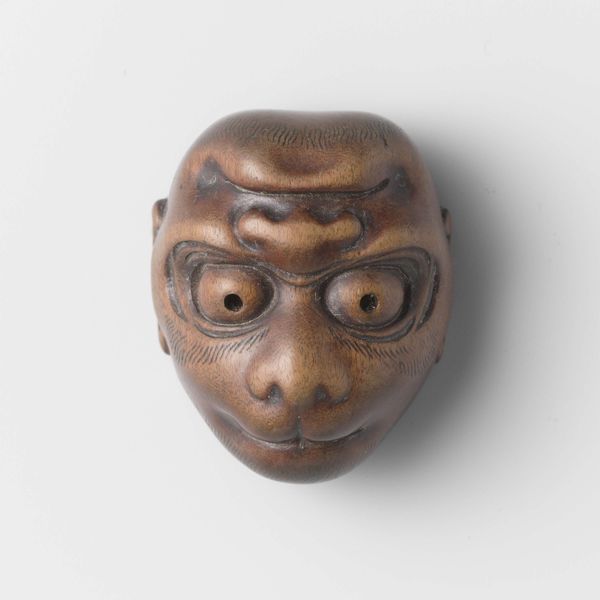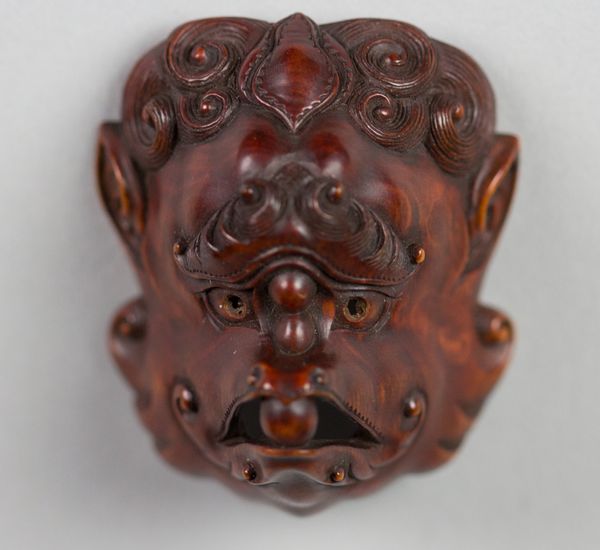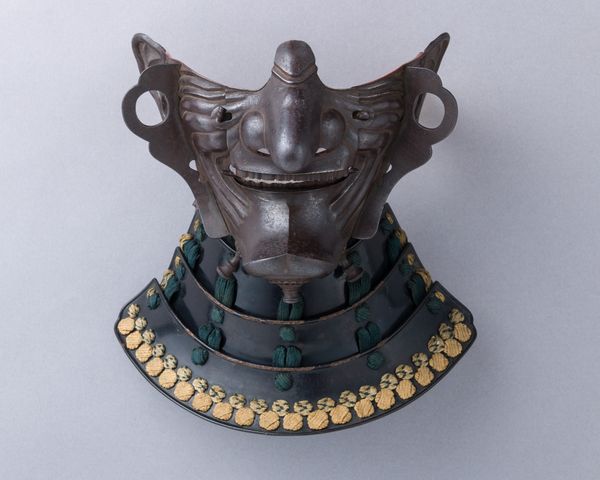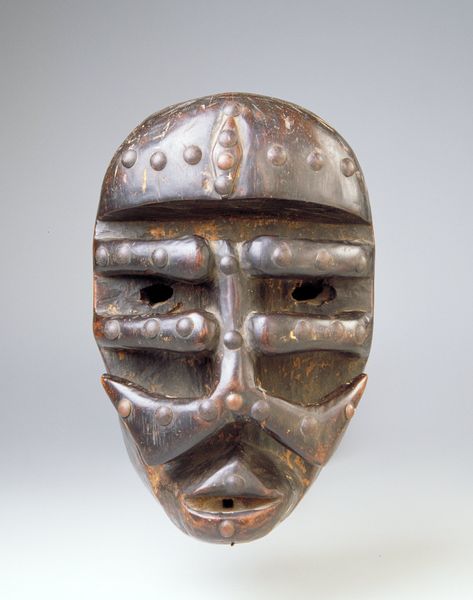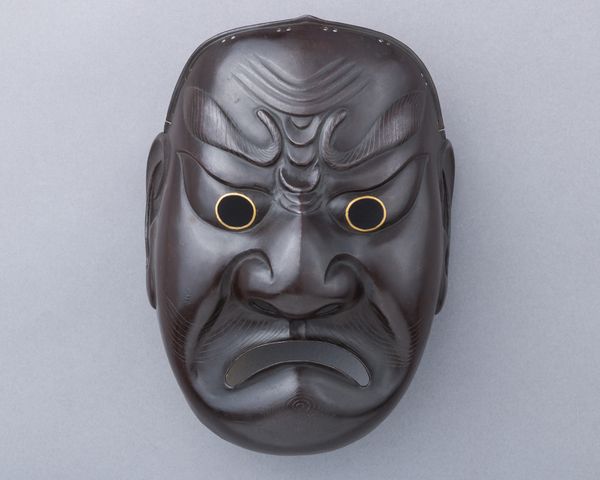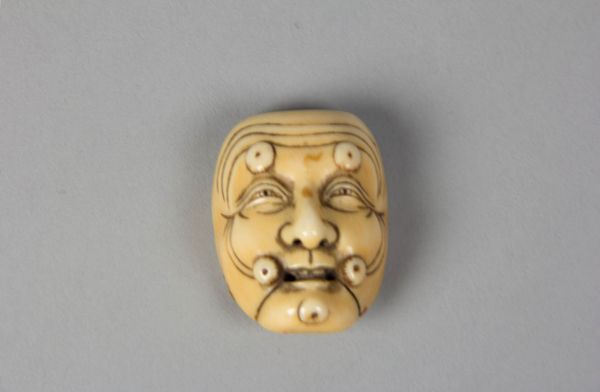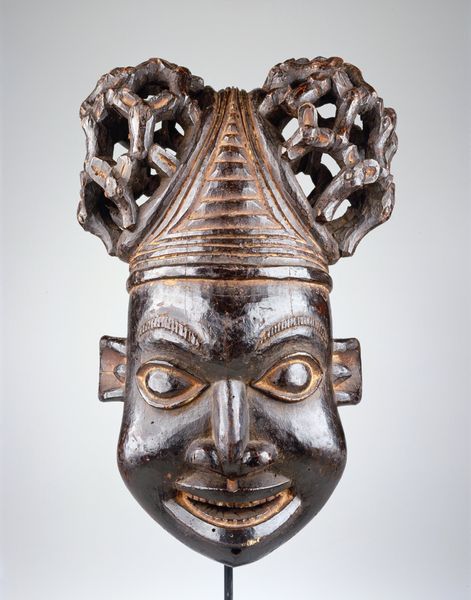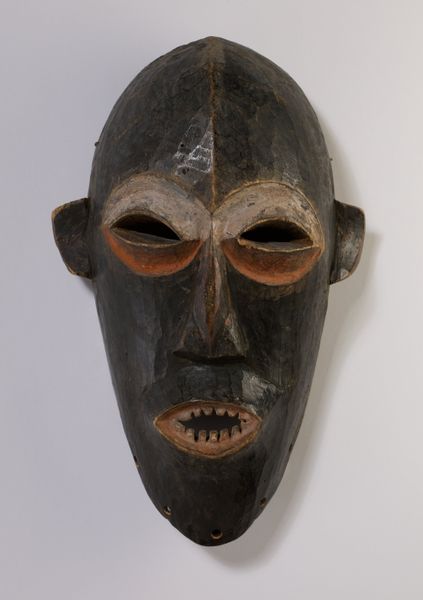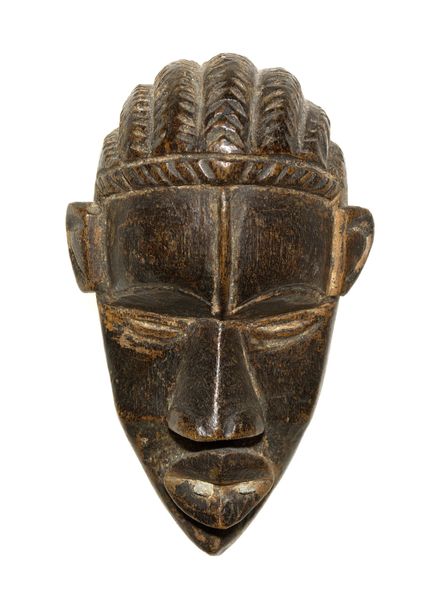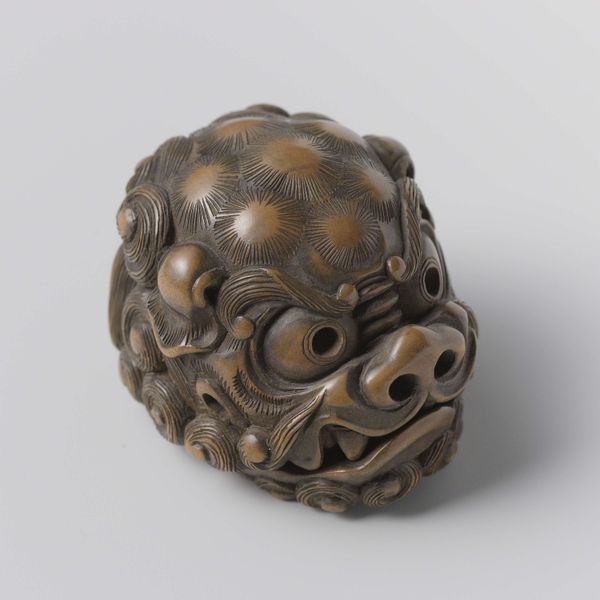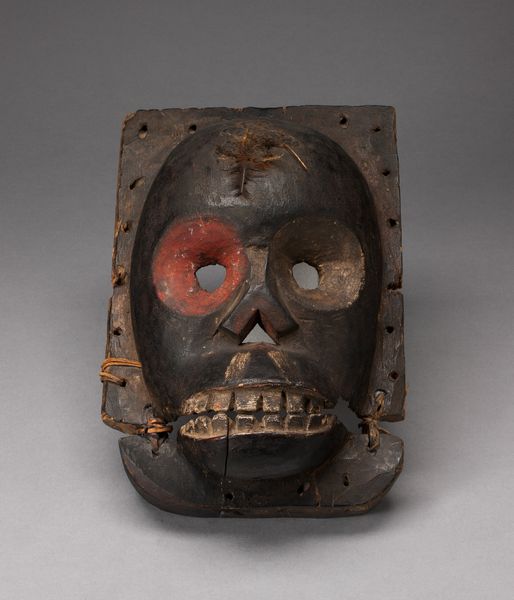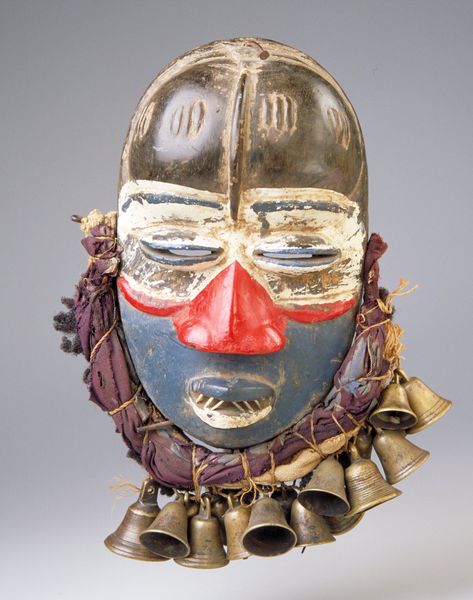
metal, sculpture
#
portrait
#
metal
#
sculpture
#
asian-art
#
sculpture
#
armor
#
statue
#
arm
Dimensions: H. 8 9/16 in. (21.7 cm); W. 6 3/4 in. (17.1 cm); D. 6 1/8 in. (15.6 cm); Wt. 1 lb. 5.7 oz. (614 g)
Copyright: Public Domain
This is a mask made by Myōchin Muneakira in the early 18th century. It’s a formidable piece, forged from iron, during the Edo period in Japan, a time marked by relative peace and the flourishing of artisan traditions. The mask presents a fierce visage. The exaggerated features are those of a warrior, designed to instill fear in enemies while protecting the wearer’s face in battle. The Myōchin family were renowned for their craftsmanship, and the mask reflects not only technical skill but also the complex social hierarchy of the time. Armor, like this mask, served as a status symbol, signifying the wearer’s position within the samurai class. Consider the emotional weight of such an object. On one hand it’s a practical piece of equipment. On the other, it speaks to themes of power, protection, and the performance of masculinity within a rigid social structure. The mask transforms the wearer, allowing them to embody strength and authority on the battlefield. It’s a potent reminder of the human desire to shape identity and project an image of invincibility.
Comments
No comments
Be the first to comment and join the conversation on the ultimate creative platform.
